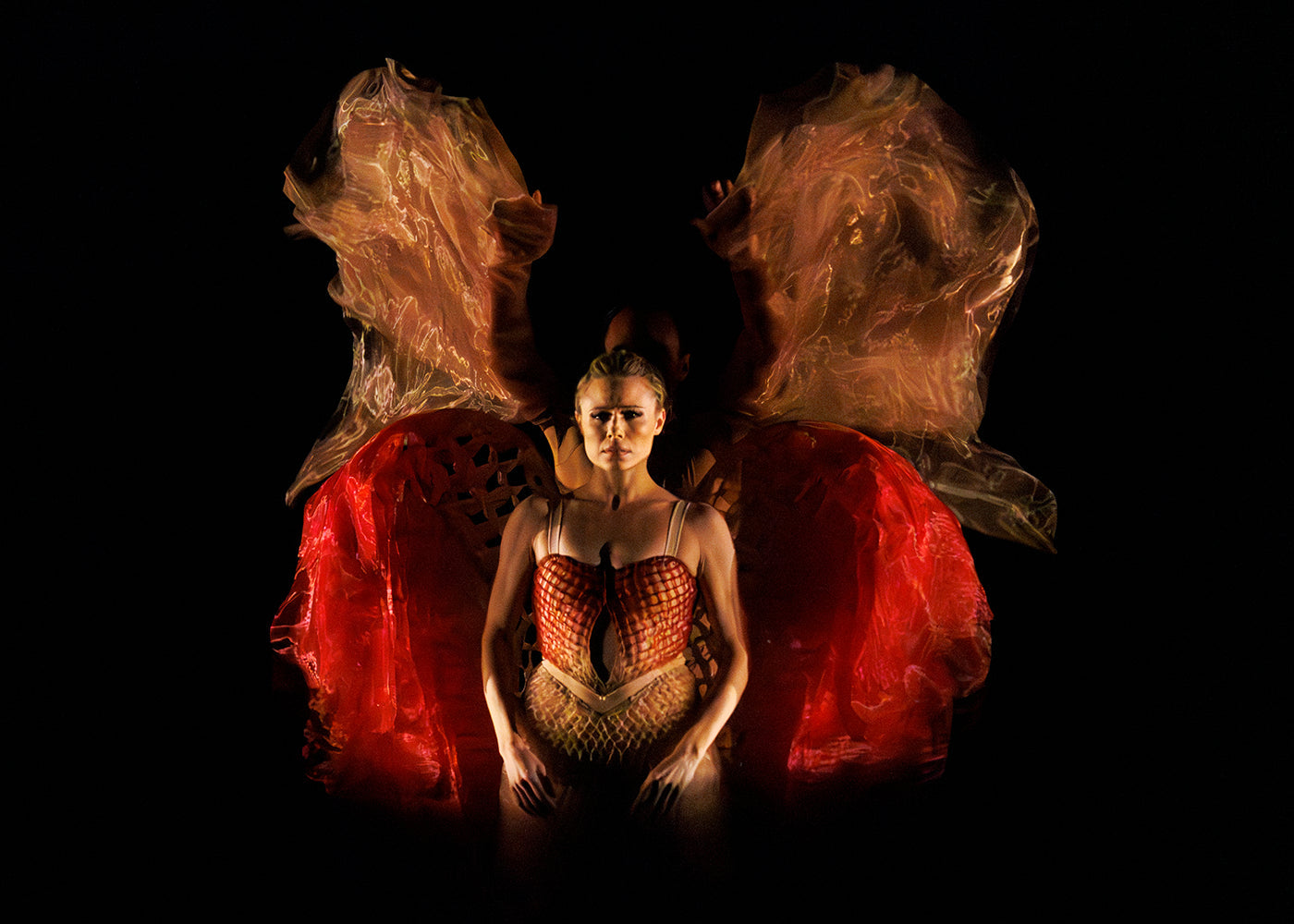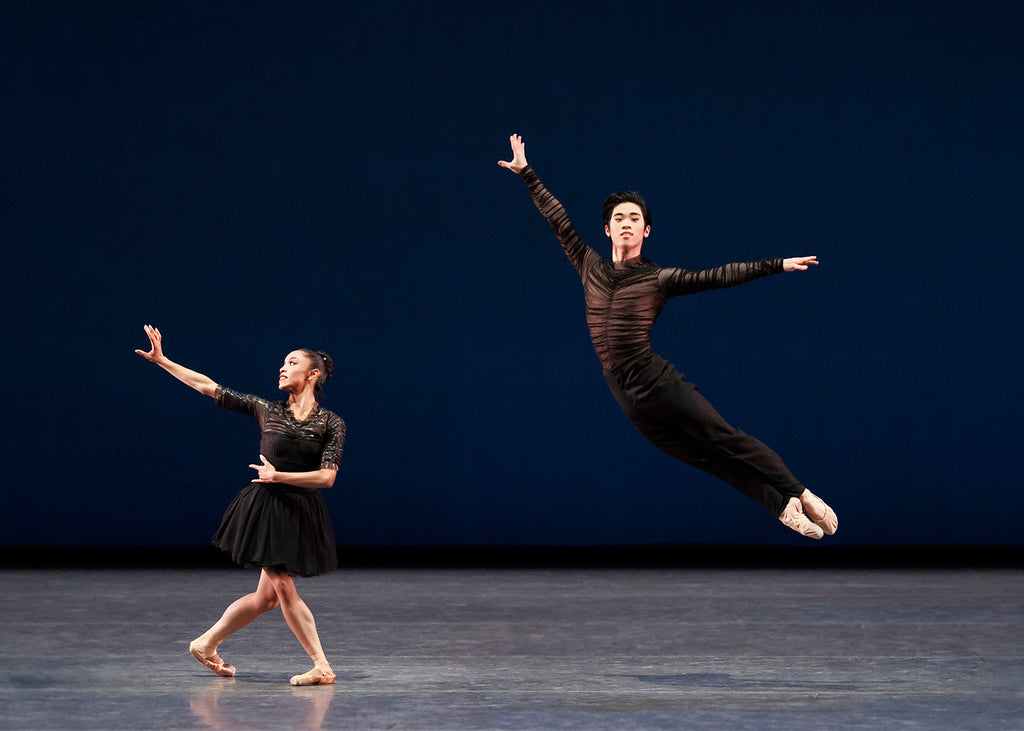Roberts’s use of the contemporary style for “Foreseeable Future” was also on trend—or maybe retro. His last piece for the company, “Emanon—In Two Movements,” was by far the most balletic work I’d ever seen him do. In “Future,” he went back to his roots, employing fast-paced, fluid isolations that incorporated pop and lock techniques. In the way he kept his techno group largely rooted yet divided into canons through steps, “Future” reminded me of his pandemic dance for the Alvin Ailey American Dance Theater, “Holding Space.” That work adhered to the rules of social distancing, so it was the only option at the time. There is no reason for this device now, other than it has crept into the contemporary vernacular.
The whole time I was watching “Foreseeable Future” I was thinking about how technology has already infiltrated dance. And maybe post-humanism was part of Roberts et al.’s thesis: the naturalistic wings and skins were made through cutting-edge means after all. From life-saving medical implants to the dastardly microplastics, technology is a part of us now. It has become part of dance too, and particularly the contemporary style, which relies heavily on a planted leg base and spitfire arm moves. I am often reminded of Neo dodging bullets in the Matrix when I see contemporary works—his feet anchored, his back fluid and boneless, his arms flying. It was fitting that Roberts employed this style for “Future,” which lyrically riffed on the man vs. machine plotlines of the Matrix film trilogy. And Roberts used the style for both teams in “Future,” which was telling. Oddly enough, the winged creatures never flew through jumps or lifts or the usual ballet routes. Save for a small, slow lift in the pas de deux, they were as grounded as the wingless army.
In general, big group migrations tend to happen in herds in the contemporary style, not in the filigreed, kaleidoscopic patterns of Petipa or Balanchine. The rootedness and the lumping reflect the way that we immerse ourselves in personal screens and look at smaller and smaller worlds, with some clumping into groups: likes and dislikes, political camps, fan bases. Likewise, contemporary choreographers keep bodies in place and carve them into ever smaller units. As we are on our phones, hands are busy while legs are stationary. Covid parameters surely contributed to these shifts, yet technology influenced them even before that. Our robotic era is also evident in all the jerky isolations. Reisen’s sharp balletic arms in “Holiday” were a “Serenade” tip of the hat, but they were also part of the freeze-frame aesthetic of the contemporary style—and they were widespread in “Future.”












Faye Arthurs, for my money, is the best dance reviewer anywhere.